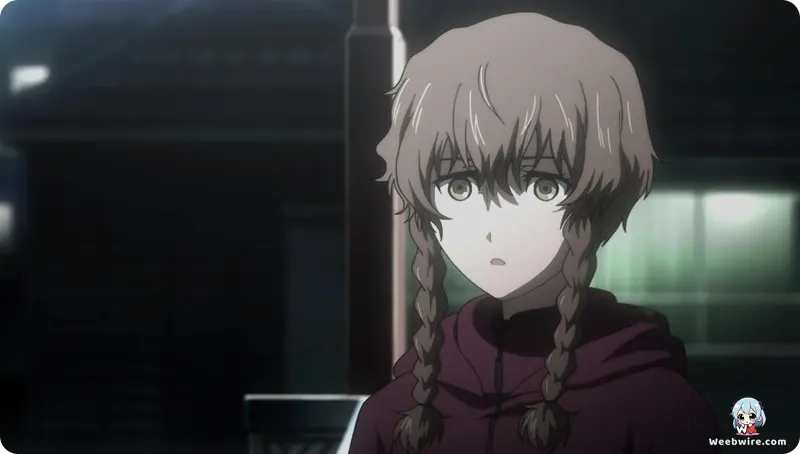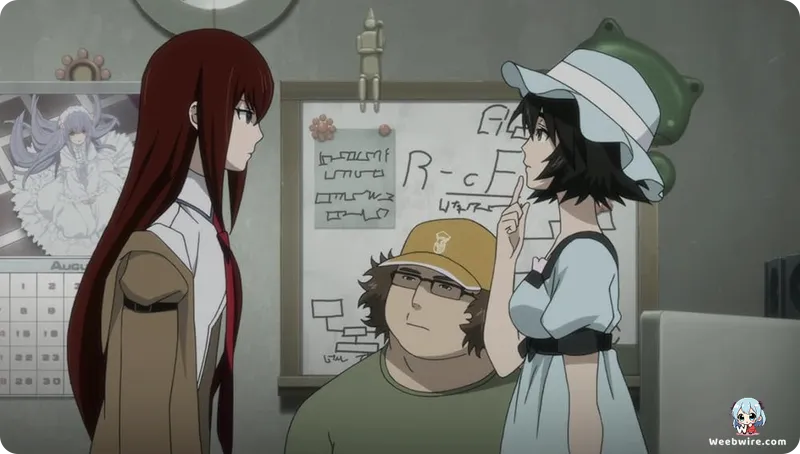Steins;Gate The Movie: Unveiling the Paradoxical Depths of 'Load Region of Déjà Vu'

Released in April 2013, Steins;Gate The Movie – Load Region of Déjà Vu serves as an emotionally charged epilogue to the acclaimed anime series, expanding its intricate narrative. This cinematic installment explores the profound psychological consequences of time travel, particularly for its central figure, Rintaro Okabe. While the original series established rules and dangers of altering causality, the film introduces new concepts and challenges that test the resilience of its characters and the essence of the Steins Gate worldline. It offers a captivating experience for fans, with compelling insights and crucial details that solidify its enduring legacy.
One of the film's notable innovations is its unique interpretation of established time travel mechanics. Unlike the series, which focused on averting global crises and preserving individual lives through D-Mails and time leaps, the movie confronts the harrowing notion of a protagonist's existence gradually vanishing from a worldline. This phenomenon, affecting Okabe, is termed the "Load Region of Déjà Vu." It signifies the progressive erasure of his very being from the Steins Gate worldline itself. This audacious twist compels the audience to consider the ultimate sacrifices of Okabe’s journey through countless divergent futures and pasts.
His mind, conditioned by the jarring shifts of Reading Steiner, begins to fragment, unable to firmly anchor itself to a singular reality. This immense psychological burden, hinted at in the series, is brought to the forefront with devastating clarity in the film, making it a pivotal exploration of the hero's trauma.
Role Reversal and Character Evolution
Perhaps the most surprising and deeply moving aspect of the movie is the complete inversion of roles between Okabe and Kurisu Makise. Throughout the original series, Okabe relentlessly strove to rescue Kurisu from her predetermined demise, enduring countless iterations of anguish to reach the Steins Gate worldline. In Load Region of Déjà Vu, the dynamic dramatically shifts: it is now Kurisu who must assume the mantle of savior, embarking on a perilous temporal journey to avert Okabe's disappearance.
This role reversal is not merely a narrative device; it serves as a powerful testament to their profound bond and Kurisu’s significant character evolution. She, who once dismissed the Mad Scientist’s pseudo-scientific ramblings, now embraces the impossible to save the man she loves. Her unwavering resolve, scientific prowess, and emotional fortitude are pushed to their limits, offering a fresh and deeply rewarding perspective on their relationship and individual character arcs. It unequivocally demonstrates that the emotional core of the series, the intrinsic connection between its characters, remains paramount, even amidst complex scientific paradigms.

The Meaning of the Title
The title itself, "Load Region of Déjà Vu," is a brilliant linguistic play and a direct metaphor for Okabe's predicament. The "load region" alludes to a segment of computer memory where data is stored for execution, suggesting that Okabe's very existence is a program being "unloaded" or deleted from the world's memory. The "déjà vu" component speaks to the fragmented recollections and distorted perceptions he experiences as his reality unravels. This scientific metaphor grounds the fantastical elements in a relatable, albeit abstract, concept, reinforcing the series' characteristic blend of hard science fiction and emotional drama. It is a nuanced detail that enriches the film’s central conflict, highlighting the intellectual depth fans have come to anticipate from the franchise.
Canonicity and Legacy
While widely embraced by the fanbase as a fitting and emotionally fulfilling conclusion, the movie’s canonicity within the broader Steins;Gate narrative, particularly concerning the events of Steins;Gate 0, has sparked considerable discussion among dedicated aficionados. Many perceive it as a definitive romantic epilogue for Okabe and Kurisu on the Steins Gate worldline, providing a sense of closure that the original series, despite its triumphant ending, left subtly open-ended regarding their future. However, its events are generally considered distinct from the main continuity that leads into Steins;Gate 0, which explores an alternative timeline where Okabe fails to save Kurisu. This distinction is crucial for comprehending the different narrative branches of the Steins;Gate universe and appreciating the movie as a standalone, self-contained story that delivers fan service in the most impactful way: by offering a deeply emotional payoff for the struggles endured by its protagonists. The film serves as a heartfelt tribute to those who yearned for a stable and happy future for the iconic duo, providing a definitive answer to the question of their romantic destiny.
Production Quality
Finally, the film excels in upholding the exceptional production values and distinctive artistic style that made the original TV series a visual and auditory delight. The animation studio, Frontier Works, meticulously rendered the familiar settings of Akihabara and the intricate character expressions, ensuring a seamless transition from television to the big screen. The musical score, building upon the iconic themes composed by Takeshi Abo, flawlessly amplifies the film's emotional intensity and suspense, elevating key scenes and intensifying the sense of urgency and romance. The fusion of intricate plot, compelling character development, and superb technical execution ensures that Steins;Gate The Movie – Load Region of Déjà Vu stands as a worthy successor to the legendary science fiction franchise, offering fans a final, unforgettable journey through time and emotion.
Credits
Steins;Gate The Movie – Load Region of Déjà Vu
Author
5pb. and Nitroplus
Cover Art
Huke
Studio
Frontier Works
Publisher
5pb. / Nitroplus
Producers





